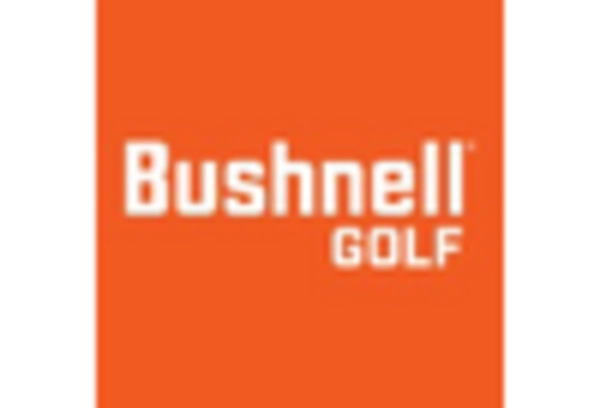Rising Military Expenditure
The tactical optics market is experiencing growth due to the increasing military expenditure in the US. The Department of Defense has allocated substantial budgets for modernization programs, which include advanced optical systems. In 2025, military spending is projected to reach approximately $800 billion, with a significant portion directed towards enhancing the capabilities of ground forces. This trend indicates a robust demand for high-performance tactical optics, as military personnel require reliable and precise equipment for various operations. The tactical optics market is likely to benefit from this surge in funding, as manufacturers strive to meet the evolving needs of defense forces.
Growing Law Enforcement Adoption
The tactical optics market is witnessing a notable rise in adoption by law enforcement agencies across the US. As public safety concerns escalate, police departments are increasingly investing in advanced optical systems to enhance operational efficiency. In 2025, it is estimated that law enforcement agencies will allocate around $5 billion for equipment upgrades, including tactical optics. This trend suggests a shift towards more sophisticated tools for surveillance and tactical operations, thereby driving growth in the tactical optics market. The integration of optics in law enforcement not only improves accuracy but also enhances situational awareness during critical incidents.
Technological Integration in Optics
The tactical optics market is evolving with the integration of advanced technologies such as augmented reality (AR) and digital imaging. These innovations are enhancing the functionality and performance of optical systems, making them more appealing to both military and civilian users. In 2025, the market for smart optics is expected to grow by approximately 15%, driven by advancements in technology. This trend suggests that manufacturers in the tactical optics market are focusing on developing cutting-edge products that incorporate features like real-time data display and improved target acquisition capabilities. Such advancements are likely to redefine user experiences and operational effectiveness.
Surge in Outdoor Recreational Activities
The tactical optics market is benefiting from a surge in outdoor recreational activities among civilians in the US. As more individuals engage in hunting, shooting sports, and outdoor adventures, the demand for high-quality optics is on the rise. In 2025, the outdoor recreation sector is projected to contribute over $800 billion to the US economy, with a significant portion directed towards equipment purchases. This trend indicates a growing consumer base for tactical optics, as enthusiasts seek precision and reliability in their gear. The tactical optics market is likely to capitalize on this trend by offering innovative products tailored to the needs of recreational users.
Increased Focus on Training and Simulation
The tactical optics market is influenced by an increased focus on training and simulation programs within military and law enforcement sectors. As agencies recognize the importance of effective training, investments in simulation technologies are rising. In 2025, it is anticipated that training budgets will exceed $10 billion, with a portion allocated for optics training. This trend indicates a growing recognition of the need for realistic training environments, which often require high-quality tactical optics. The tactical optics market is poised to benefit from this emphasis on training, as agencies seek to equip personnel with the best tools for skill development and operational readiness.
















Leave a Comment